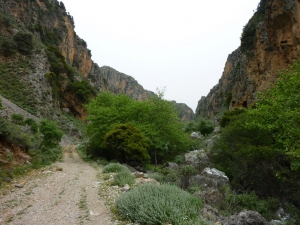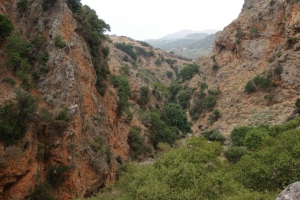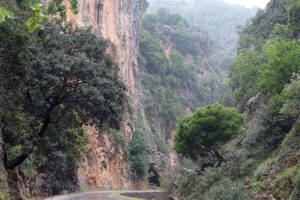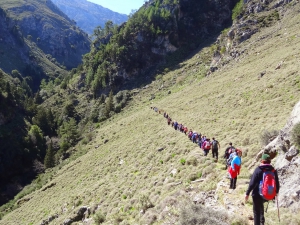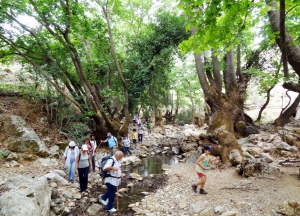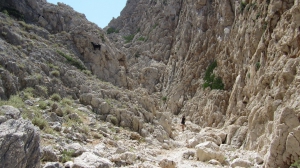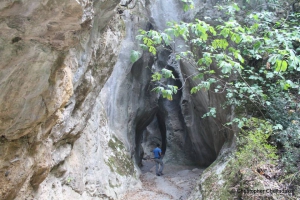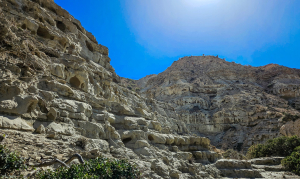Deliana – Mesavlia Gorge is located 37km west of Chania. Starting from the village Mesavlia it descends to the village Deliana after 5km. Walking in the gorge is very easy (takes about one hour) and is suggested even for children, as it runs along a dirt road.
The gorge of Rocca, Roka, Rocka or Rokka is located 32km west of Chania, in the area of Kolymbari. The 2km gorge starts from the village Deliana and ends at the village of Roka. In the settlement there is Trouli hill, where you can still see the ruins of a Byzantine fortress.
The Gorge of Therisso (named also Eleftherios Venizelos) is located near the city of Chania. You can go there by car. The main gorge is six kilometers long. The vertical cliffs are impressive and the lush vegetation has nothing to envy of the other Chania Gorges. The place deserves a visit, even with a vehicle, cobined with a visit in the historical beautiful village of Therisso.
One of the nicest gorges of Crete is that of Vrissi on the north side of the White Mountains, crossed by the river Vrissiotis which gathers water from Melidaou area and waters Zourva and Lakki. In the gorge there is the cave - underground river with water springs, while many waterfalls of exquisite beauty are met in several places. The trail to the spring of the cave starts from Lakki and ascends along the walls of the gorge. From the spring starts another downhill trail to Zourva.
The canyon of Diktamos starts 21km east of Chania, next to the village Katochori at an altitude of 300m, and ends 8km eastern, at the village Faragi, at an altitude of 40m, next to the village of Stylos. Thus, it is also known as Katechori Gorge or Stylos Gorge.
Avlaki gorge is located near the monastery Gouverneto, 16km east of Chania city. It is one of the most important gorges in Crete with a particular religious value, as many monks and hermits found shelter in its caves. Inside the small canyon there is the deserted Katholiko monastery, perhaps the oldest monastery in Crete. Thus, the gorge is also called Katholiko Gorge.
Potamos beach in northwestern Gavdos is formed at the outlet of various small streams. Their soils are mainly clay, which makes them create special formations as they are dissolved by rain and wind. Some of the formed streams pass through harder rocks, creating deep canyons with waterfalls of amazing beauty, which, however, can be seen by someone with water even in winter relatively rarely.










